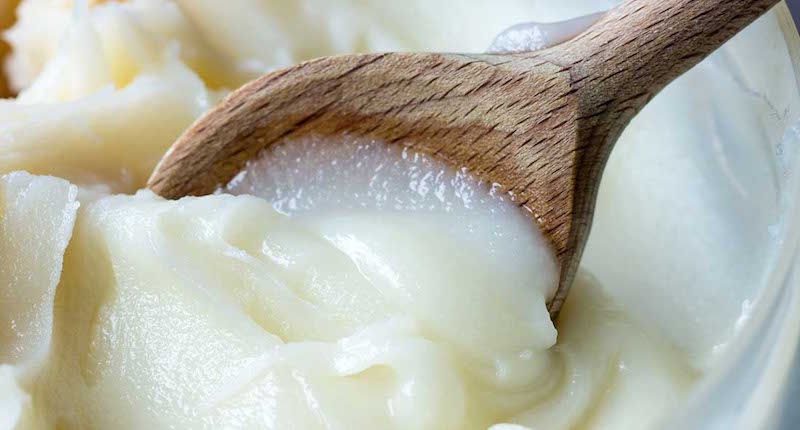Understanding Healing And Harmful Fats, Helps You Make The Right Food Choices
Last updated on
You have probably read or been told that a low-fat diet is one of the best options for losing weight and promoting better health. It is this type of misinformation that has led many people to believe that all fat is bad for you. The truth is, some fat is good for you. You just need to know which ones.
Bad fats can have a damaging effect on your body. They can increase your cholesterol levels and add to the risk of heart disease and other cardiovascular issues. But, not all fats are created equal. Here is an easy way of explaining the 4 different types of fats:
- Saturated fats
- Monounsaturated fats
- Polyunsaturated fats
- Transfats
Understanding Healing And Harmful Fats
1. Saturated Fats
From a chemical standpoint, saturated fats are typically solid at room temperature because they are saturated with hydrogen molecules. Some examples of saturated fats are coconut oil, palm oil, butter, ghee (clarified butter), cheese, fats/lard, meat and eggs from grass-fed animals.
Saturated fats tend to be solid at room temperature. The molecules are so saturated that it leaves very little, if any, room for oxygen or free radicals to oxidize it, even when cooked in high heat.
Saturated fats used to get the bad rap decades ago for causing heart disease, but new data shows that they are completely safe and stable for cooking and consumption. New studies are showing that they do not cause heart disease and may even lower the risk of stroke.
It is due to these reasons that coconut oil and avocado oil are two of my favorites. They have been found to be safest for high-heat cooking as the saturated fats are stable and don’t get damaged in heat. Do not fear using and consuming saturated fats for its many health benefits.
2. Monounsaturated Fats
Monounsaturated fats (MUFAs) are good fats . They are liquid at room temperature but turn solid when chilled. They are similar to saturated fats in that they don’t turn rancid easily and are generally safe for cooking. These fats are a better option than polyunsaturated fats and transfats.

- Better cholesterol levels
- Lower risk of heart disease and stroke
- Weight loss and reduced belly fat
- Reduced pain and stiffness in arthritis joints
Unlike saturated fats, monounsaturated fats are best eaten raw. Some excellent sources of these fats include: Olives, macadamia nuts, almonds, peanuts and cashew nuts. Olive oil may be used for low heat cooking but not for extended and high heat cooking.
3. Polyunsaturated Fats
Polyunsaturated fats (PUFAs) are weaker and are always in liquid form. It doesn’t turn solid even in cold storage (unlike MUFAs). These fats can turn rancid easily and are unstable to be used for cooking, not even on low heat. In fact, any heat and light will destroy these fats and cause it to be oxidized.
Two examples of polyunsaturated fats:
- Omega-3 Fatty Acids: This is perhaps the healthiest fat that is anti-inflammatory, and helps to power your brain and reduce the risk of heart disease. Wild fatty fish and flaxseeds are excellent sources of omega-3 fats. Some other food sources are walnuts, sunflower seeds, legumes, grains and green vegetables.
- Omega-6 Fatty Acids: A diet that contains a lot of omega-6 fatty acids could lead to inflammation, which is known to contribute to heart disease. Corn oil and sunflower oil contain large doses of omega-6 fatty acids.
Omega-3 fatty acids are essential for your body. Consuming them from the right sources can help correct the imbalance of omega-3 to omega-6 ratio. Studies have suggested that an imbalance of these two fats can lead to obesity and an increased risk of diabetes.
Read about the food that is causing a severe fats imbalance here.
Some vegetable oils have been touted to be healthy. No matter what the packaging says, AVOID all vegetable oils, including sunflower oil, corn oil, safflower oil, canola oil, soybean oil, etc. These oils are highly processed and offer no nutritional value. They turn into transfats when used in cooking and may be more harmful than good as they disrupt the nutrients and hormones in our bodies.
4. Transfats
At the bottom of the list is transfats, which are known to clog arteries and increase the risk of heart disease. Transfats can be found in a lot of processed foods, including margarine and pie crusts. Vegetable oils (see PUFAs above), when heated, becomes harmful transfats. Also avoid hydrogenated oil that are used in many processed foods and meats, commercially-prepared sauces, dips and bread spreads.
Finally, it might be helpful to know that fatty foods may contain all the three types of fats (Saturated, MUFAs and PUFAs). The percentage of the different fat contents will determine their stability or whether they are safe for cooking, or should be eaten in its raw or cold-pressed state.
Once you understand these principles, it is not difficult for you to choose to eat the right fats and not fear putting on weight.
Some of the links I post on this site are affiliate links. If you go through them to make a purchase, I will earn a small commission (at no additional cost to you). However, note that I’m recommending these products because of their quality and that I have good experience using them, not because of the commission to be made.











































 JOIN OVER
JOIN OVER
Comments